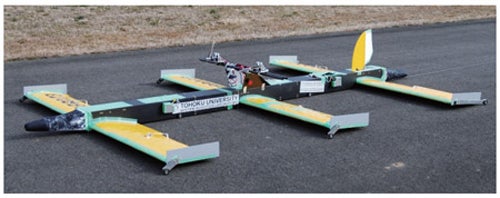Video: Japanese Speedster Robot Levitates on a Cushion of Air
It could spawn high-speed ground-effect trains

Researchers in Japan are trying to get a new kind of high speed train technology off the ground, and to prove they’re serious they’ve built a ground-effect robot that floats on a cushion of air. If their demo project works satisfactorily, it could set in motion a plan to build commuter trains that essentially fly inches from the ground, cutting friction and increasing overall efficiency.
Though on its face it sounds similar, this is not maglev. Ground-effect vehicles are more like extremely low flying airplanes that use stubby wings and the lift provided by the fast-moving air between its body and the ground to stay just a few inches aloft. As such, they are in some ways more complex than maglev trains–you have to manage for pitch, yaw, and roll as with an aircraft–but in other ways they are more simple.
For one, maglevs create a certain amount of drag between the bottom of the train and the track below that reduces efficiency. Perhaps even more daunting these days, maglevs are also extremely expensive to build.
The vehicle seen above (and below) was developed by researchers at Japan’s Tohoku University to test autonomous stabilization in a ground effects vehicle. Data collected from their model robot will be used to develop a manned experimental train that can run on a closed, U-shaped track at about 125 miles per hour. If that works, Japan will officially have a prototype of an advanced train just as fast as–and several generations ahead of–America’s fastest passenger train on a good day.
